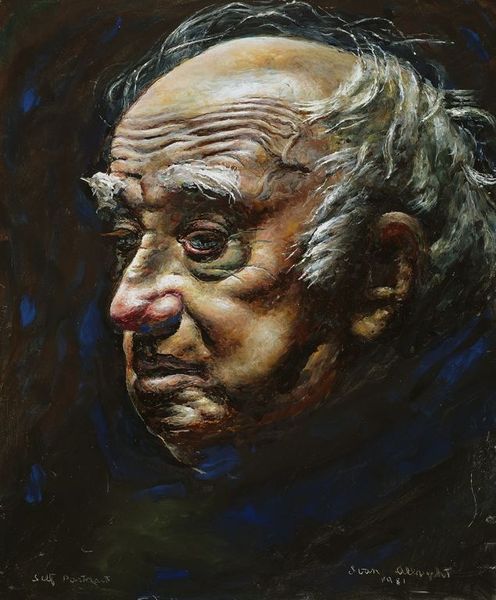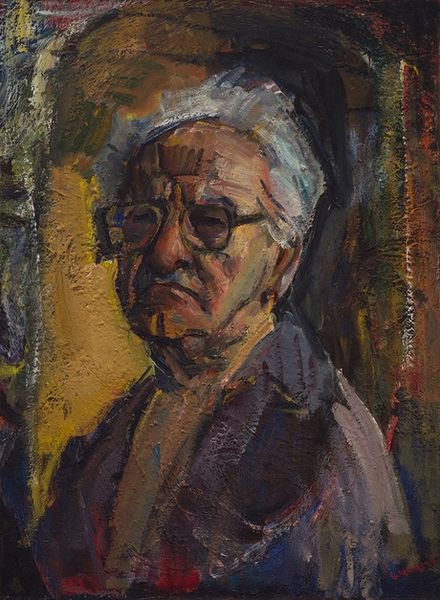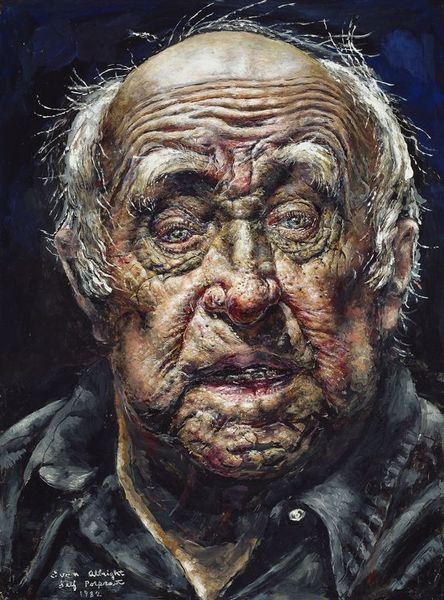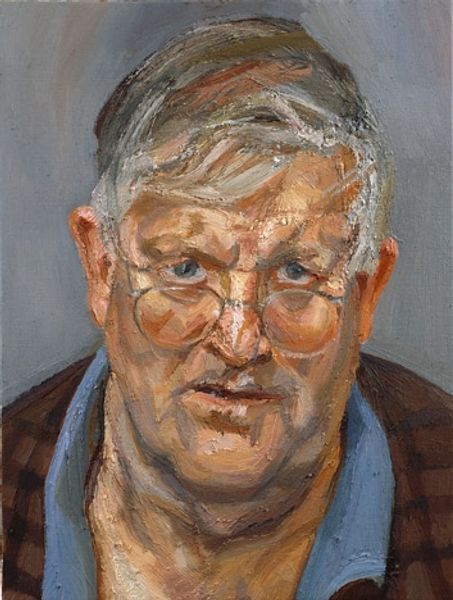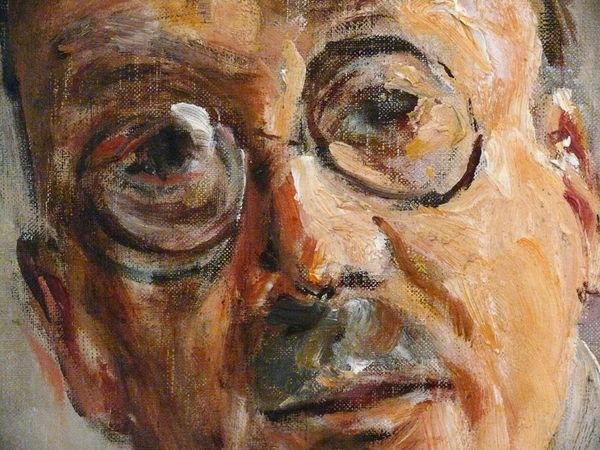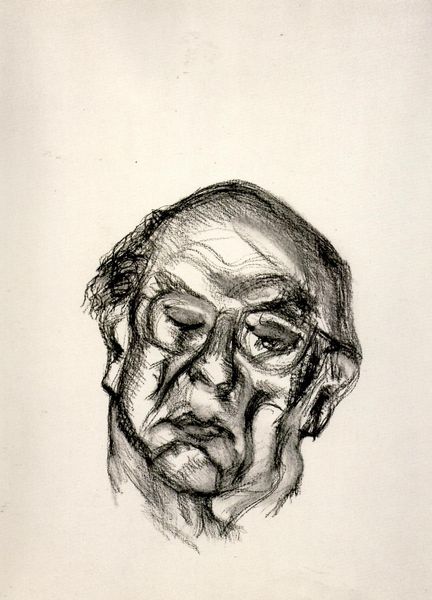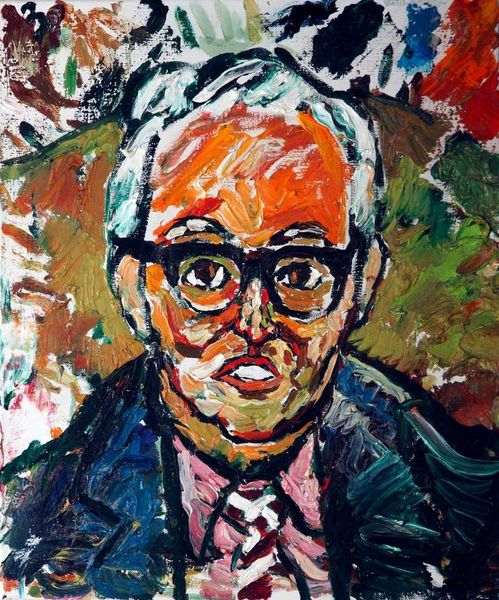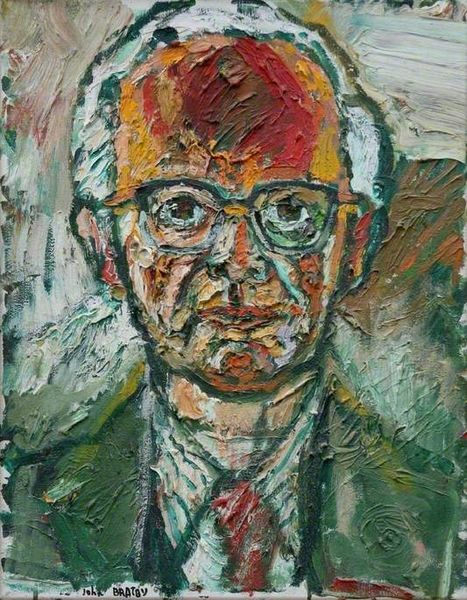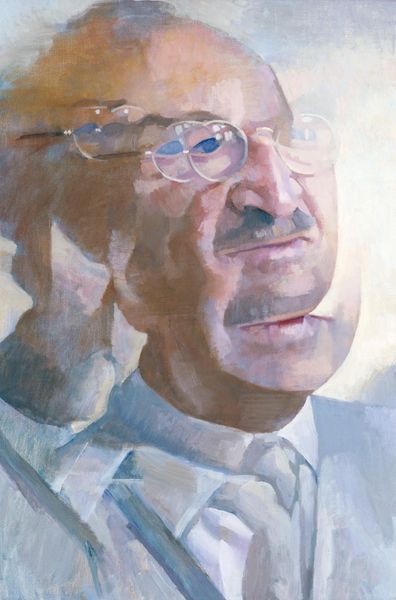
Copyright: Ivan Albright,Fair Use
Curator: Welcome. Before us hangs Ivan Albright's “Self-Portrait” from 1982. It's oil on canvas, encased in glass. Editor: My initial impression is one of vulnerability. There's something quite raw and exposed about the artist presented this way. Curator: Absolutely. The brushstrokes themselves, so thickly applied, demonstrate a certain...labor. Look at the physical density of the paint, almost sculpted onto the canvas. One really feels the material process involved. I think this heavy impasto also tells us about consumption—both how much material the artist utilized, but also how painting of this sort would be marketed and valued by a specific art-buying consumer base. Editor: And what a face! Every wrinkle, every shadow is laden with meaning. Those spectacles, perched on his nose, seem to magnify not only his vision but also his penetrating gaze into his very essence. The choice of such a direct presentation carries enormous psychological weight. What could this tell us about self-conception at this period in the artist's life? Curator: You know, Ivan Albright’s almost perverse delight in showcasing aging, decaying flesh—as one of his contemporaries termed it, he sought "a sort of realism on the wrong side of the grave"—shows the complex realities of material decay. A self-portrait provides us a way to literally understand the artist's own self in their moment of decline, but even beyond. The painting serves to demonstrate that even physical ruin may last longer than corporeal, human flesh. Editor: Precisely. He stares at mortality. Even his eyes show that this mortality comes with wisdom. But in that wisdom, he also seems saddened by what he is looking at in the mirror. There's the weight of cultural memory, isn't there? So many artists before him have grappled with this very same subject – what does it mean to gaze upon your own fleeting image? And even his slightly opened lips are also expressive, as if his reflection would speak to him. Curator: Yes, the material processes here are not only representational. The labor behind it—the way this portrait consumed both literal paints and the hours Albright must have labored at depicting his features. It shows us how that labor becomes the end point itself, something lasting. Editor: The unflinching symbolism gives me shivers. I come away feeling an awareness of the sheer courage of self-confrontation, unflinchingly committed to canvas. Curator: Agreed. I walk away appreciating, more than ever, that it is not only representation, but materials and labor, that allow art to speak to these larger questions about existence.
Comments
No comments
Be the first to comment and join the conversation on the ultimate creative platform.
